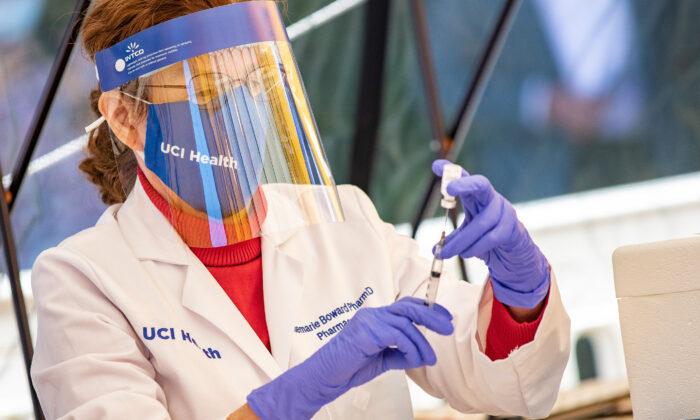New COVID-19 cases have fallen 52 percent in Orange County during the past two weeks, according to data from the Orange County Health Care Agency (OCHCA).
There were 42 deaths reported Feb. 11; a total of 3,493 people in Orange County are reported to have died from the virus since the pandemic began. According to the OCHCA, 890 of the cumulative deaths were from skilled nursing facilities. Another 386 deaths were from assisted living facilities.
There were 965 people hospitalized with COVID-19 on Feb. 11, the first time hospitalizations have been below 1,000 since the beginning of last December. There were 298 patients in intensive care units.
There have been 209,270 people who have recovered from the virus as of Feb. 11.
The new daily numbers come as the county is looking for new ways to increase vaccine inoculations to those currently eligible.
A number of CVS pharmacies began offering inoculations on Feb. 11. Stores that offered the service include locations in Aliso Viejo, Buena Park, Costa Mesa, Huntington Beach, Irvine, and Yorba Linda.
University of California–Irvine (UCI) health sciences assistant clinical professor Keri Hurley-Kim said the rate of vaccinations will start picking up as more sites are added.
“It’s really important to keep in mind the complexity of this process and all of these steps that have to be coordinated in order to get the vaccine to people,” Kim said during a Feb. 11 COVID-19 panel. The seminar was hosted by UCI’s School of Pharmacy and Pharmaceutical Sciences.
“I do feel optimistic that our processes are improving, and as long as our supply continues to increase, we'll start to see the rate and the pace of vaccination continue to increase as well.”
Kim also discussed what goes into deciding which parts of the population receive the vaccines first.
“There are also a lot of decision-making processes that go into figuring out who’s going to get vaccinated first,” she said. “The factors that are considered here at the most basic level are maximizing benefit and minimizing harm so this means reducing, to the greatest degree that we can, the most deaths and reducing hospitalizations. So this is why we prioritize our older adults and also those with high-risk conditions.”





